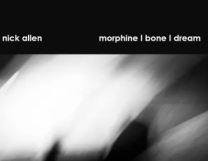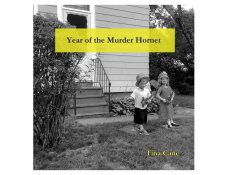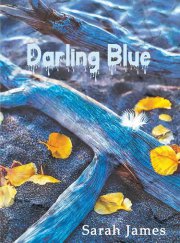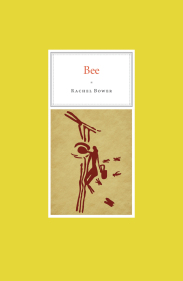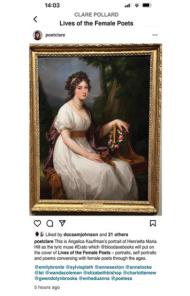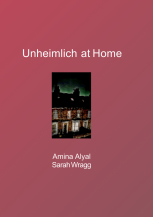
Nick Allen, morphine|bone|dream,
Maytree Press, 2021.
ISBN 9 781913 508203. 29pp.
Allen sets the scene for this haunting, chapbook length, compilation of poems and companion black and white photos; in early April 2021, he spent his first ever nights as an inpatient in hospital, with an unexpected health issue. The experience caused him to reflect not only on his own corporal and psychological state, but also the achievement of the NHS in the face of the pandemic. This slim volume goes far beyond a personal account of pain and recovery; it is a testament to the professionalism of health care workers in the face of a society eroded by self-interest and a sense that personal gain trumps ‘civil duty and communal care.’ Allen is avowedly left-wing in his politics and deeply engaged with opposing structural injustice and exploitation (half his working life is devoted to union matters); morphine|bone|dream could have lapsed into political rant. However, this does not happen, because from the opening haiku, there is a sustained intensity and steely sense of observation, in which the poet is looking out as well as in, and where his use of language consistently demands the reader do likewise.
In this place where ‘light is untrustworthy, a ‘place of loneliness within bedlam’ Allen records a hospital setting where the dying man’s wife is ‘called in from the unsterile outside’ and this becomes a vehicle for the poet’s observations of ‘the ministrations of well-intentioned strangers,’ the inadequately resourced staff who ‘did all those things that must be done.’ (poem iv: with his customary spareness, Allen merely provides Roman numerals by way of titles, and eschews capital letters and punctuation throughout).
A terrifying half-waking, half-nightmare world is summoned, like a demonic presence, in (vii) by the thumb-nail sketches of ‘the banshee [who] totters her way between the doors/ the fragile vessel of her throat open above her gown/ bobbing and havering in the half-light of her own memory’. We see the deconstruction of self, effected by serious illness, when drug-induced dreams are of dreams themselves; ‘at night I dream the dream of my body/the body as some women have known it … and I dream the dream of this body/reduced of which I am no longer as certain as I was.’ (x) The designation of the body by ‘this’ and ‘the’ rather than ‘my’ is such an effective and subtle device.
In this collection, ‘bones’ becomes an almost totemic word, representing an extended metaphor for a myriad of contexts in an unyielding world, be it the place where redundancy and work-related disease un-mans would-be workers; or the shifting identity of ‘two differently-addicted men.’ We have a ‘bone- thin moon,’ ‘bone-receiver,’ beeping bone-machines’ and ‘our own bone-shape.’ In places there are word clusters and sprung-rhythms which evoke the work of Gerald Manly Hopkins: note where Allen witnesses the agony of: ‘the soon-to-die man [who]rages and spits and curses and arches rictus-rigid sinew-straightened bog-bodied ancient screaming man …’ (iv).
It is telling that in the final poem, where a resurrection/recuperation of sorts takes place in a garden full of birdsong, the bones have walked away, and the whole man is – gradually – restoring himself.
David Coldwell, who provided the photos, is an innovative publisher and artist in his own right; under his direction, Maytree Press supports such a-typically formatted volumes (Allen’s collaboration with artist Myles Linley, Between Two Rivers (Maytree Press, 2019) is another case in point). These out of focus/over-exposed/allusive images, often of apparently inconsequential images or vistas, represent the surreal, timeless world inhabited by patients on strong opioid analgesia – or the disturbing un/realities shared by those of us who just scrabbled through lockdown as best we could (unaided by meds). Where we expect to see the reflection of the poet’s face there is a blur. This is a poet whose voice is a clarion call, but who never intrudes. This is a deeply satisfying and disturbing synthesis of words and image. Proceeds of all sales to the NHS.
Hannah Stone
To order this book click here
Hannah Stone is the author of Lodestone (Stairwell Books, 2016), Missing Miles (Indigo Dream Publishing, 2017), Swn y Morloi (Maytree Press, 2019) and several collaborations, including Fit to Bust with Pamela Scobie (Runcible Spoon, 2020). She convenes the poets/composers forum for Leeds Lieder, curates Nowt but Verse for Leeds Library, is poet-theologian in Virtual Residence for Leeds Church Institute and editor of the literary journal Dream Catcher. Contact her on hannahstone14@hotmail.com for readings, workshops or book purchases.
Tina Cane, Year of the Murder Hornet,
Veliz Books, 2022. ISBN: 978-1949776126. 116pp. $19.00
In the poem, “Stone of My Experience,” Tina Cane, poet laureate of Rhode Island, writes:
the hard truth is that when the world is breaking apart
one must get down
with the buddha
of one’s innermost self and ask what is work
and why one should do it
This might even be Cane’s manifesto – the stone of her experience, indeed – and certainly the space breaks, the pauses for breath, are the signature style in which the poems of this remarkable collection are composed, sprawling across the page in clusters of images and ideas. Certainly, the world is breaking apart. So many of these poems take place against the backdrop of our fraught times – Covid, climate change, injustice, war – and just as certainly Cane consults her inner buddha to determine how to act/react.
In the title poem, she spells it out in stark disaster-movie terms:
year of the cloud of pollen that chased me to my car across the supermarket parking lot
year I was overpowered by flowering magnolia petals in a windstorm while walking home
year of the murder hornet and coronavirus and weather as a system that shaped each day
in a way that felt different from the past
Her work, of course, is as a poet, who, as she writes in “Regime,” “like finches in cages / sense the changes before they come”. “the secret of poetry is cruelty,” she writes in “Essay on Comfort or Open Letter to Sean Hannity,” which ends, hilariously,
Dear Sean
Please go away and never come back.
All the best,
Tina
Cane’s anxiety often focuses on her children and her role as a mother. In “Shelter in Place” she tells us
I’ve been thinking
of ways to speak to my children about fear how to be adaptive
I want to tell them about zebra finches
And later in the poem: “how there’s a logic buried deep in the mother / building her nest”
In “Disposable Mask,” it’s her ten-year-old son, distraught “with the million / things he’s seen and heard”.
I can feel all the languages pulsing at his temple
beneath my lips I kiss his hot skin press my cheek too hard against his
trying to absorb every last bit of hurt from him
In “(No) Regerts,” a poem that plays on the misspelled word, she tells us “that every child became my child once I became a mother”.
Her anxiety dates to 2016. She writes in “January Exception”:
I keep feeling
everything’s gone to hell since David Bowie died
Bowie died ten days before Trump became president. Leonard Cohen likewise checked out right after the election. Apart from this Bowie thought, Cane doesn’t expound on this, but certainly the Trump era has been laden with anxiety and apprehension. The poem “YOLO” (You Only Live Once) comes with an epigraph from Marilyn Monroe: “Fear is stupid, so are regrets.” The connection with anxiety is apparent. “Rage and Ibuprofen” likewise taps into the angst. “Stable Genius of Love” is a fantasy that takes place in heaven, but of course the reference to Trump is clear. “Emotional Rescue,” the title of a 1980 Rolling Stones song and album, also aches with her anxiety about her children.
it hurts to see
how happy my youngest son becomes when his friend’s face
shows up on Skype like this is his new fun life our new normal
At the center of Year of the Murder Hornet, which is divided into 3 parts, is a long, intriguing work called “What We Talk About When We Talk About Paths,” subtitled “A Narrative in Captions,” a section unto itself, which is a series of nouns and noun phrases (few real sentences) that move along by association, playing on the word “path,” essentially. Two Bowie lyrics appear in her “path” – “Blue Blue Electric Blue That’s the Color of My Room” and “Freak Out in a Moon Age Daydream, Oh Yeah.” Clever wordplay is central to Cane’s verse, as the short poem “Hearsay” demonstrates:
I’m here I say but you hear
something else I am saying
something else here
Cane’s poems are often like meditations. Indeed, eight of the titles describe the verses as essays: “Essay on Gentrification,” “Essay on Poetics or Early Morning Texting with Orlando,” “Essay on the Advancement of Time,” “Essay on Movement,” “Essay on States,” “Essay on Sound,” “Essay on Beauty or Behold a True Story,” “Essay on Mercy.” Michel de Montaigne invented the form, coined the term, in the sixteenth century, his stated goal to describe himself with utter frankness and honesty (“bonne foi”), to be “introspective.” This is a spot-on description of Cane’s poetry as well, frank and introspective, though her thoughts often intriguingly proceed by sound, association, memory. As she writes in the poem, “Rice”:
When I rinse the rice I hear the word
Tamir in the deepest part of my ear how my mind
works at times a not-so-free association words
tethered to words inexorably a small part
of the heart broken
off and lodged where language
fuses sound to meaning
Tamir
Cane actually refers to this poem in an earlier poem in the collection called “Libretto”:
the other night though
I read a poem that began with a breakfast tray and a purple martin
bird and which several lines later became a letter
to Trayvon Martin
it reminded me of a poem
I had written about rinsing rice that wound up being about
a child named Tamir
There’s so much more to point out and appreciate in Year of the Murder Hornet, such as her thoughts on trees, as metaphors (“if context is everything let’s admit / only trees of all things are truly honest” – “Of All Things”), but the reader will discover this for him/herself. The final poem, “Breakfast of Champions,” and thus the book itself, end with the thought:
What if my one and only love is language itself lonely prospect but O
affirmation sweet breakfast of champions grab a spoon and eat me up
Charles Rammelkamp
To order this book click here
Charles Rammelkamp is Prose Editor for BrickHouse Books in Baltimore, where he lives, and edits The Potomac, an online literary journal. http://thepotomacjournal.com. His photographs, poetry and fiction have appeared in many literary journals. His latest book is a collection of poems called Mata Hari: Eye of the Day (Apprentice House, Loyola University), and another poetry collection, American Zeitgeist, is forthcoming from Apprentice House.
